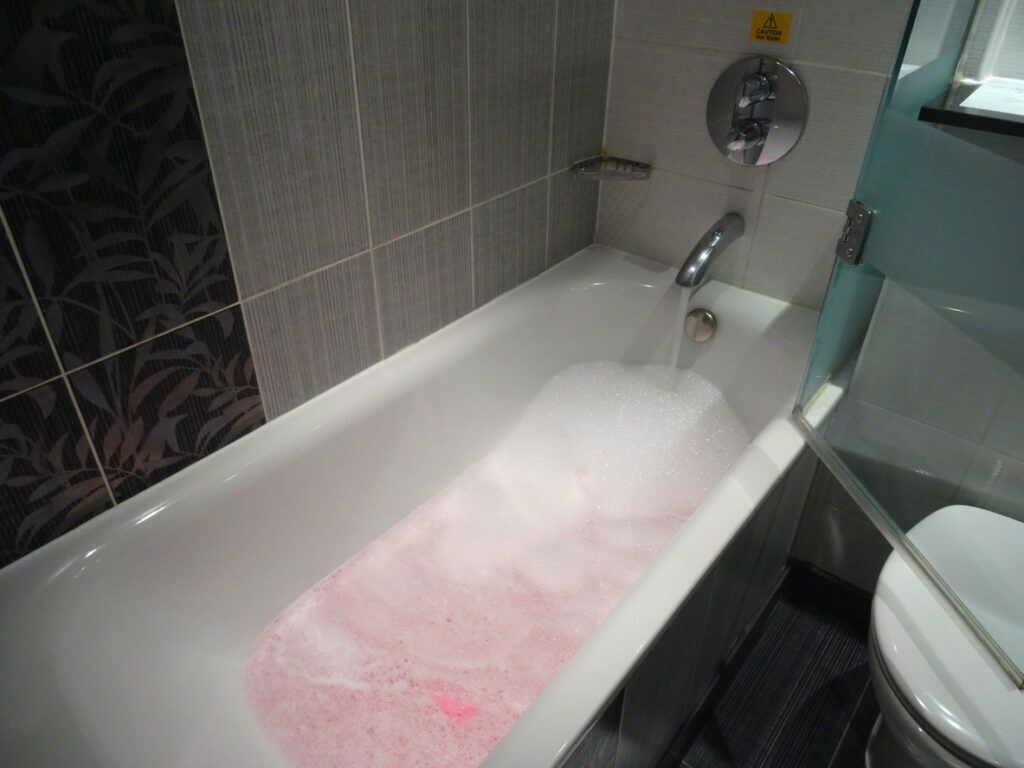This great article in the next paragraphs on the subject of What To Do If Sewage Starts Backing Up Into the Shower is particularly attention-grabbing. Give it a go and make your own findings.

Sewage backup in the bathtub can be a distressing and unsanitary trouble for any kind of property owner. Not just is it troublesome, but it also postures severe health and wellness threats and suggests underlying concerns with the plumbing system. Recognizing why sewer is showing up with the tub is vital for taking suitable activity to attend to the trouble successfully.
Introduction to the Issue
Common Reasons for Sewage Back-up
Blockages in the Sewer Line
One of the most typical sources of sewer backup is an obstruction in the sewage system line. This can happen because of the build-up of debris, oil, or international objects in the pipelines, protecting against correct circulation and triggering sewer to support right into your tub.
Tree Origin Breach
Tree origins seeking dampness and nutrients can infiltrate drain lines through small cracks or joints. With time, these roots can expand and increase, causing considerable damage to the pipes and bring about sewage back-up issues.
Recognizing the Trouble
When sewer draws back up into the bathtub, it's a clear indicator of a problem with the drainage system. The wastewater that should be streaming away from your home is instead finding its back right into your space, which can result in considerable damage and carcinogen.
Possible Causes
Several factors can add to sewage back-up in the bathtub. From obstructions in the drain line to issues with the plumbing infrastructure, identifying the origin is crucial for discovering an option.
Aging Facilities
Older homes might have dated plumbing systems that are extra at risk to deterioration, splits, and damage. As pipes age, they become much more vulnerable to leakages and obstructions, increasing the chance of sewer backup cases.
Heavy Rainfall or Flooding
During durations of heavy rainfall or flooding, the sewer system might become overloaded with excess water, triggering backups and overflows. This can lead to sewer backing up into bath tubs and other components inside the home.
Signs of Sewer Back-up
Foul Odors
Undesirable odors emanating from drains or fixtures, especially in the washroom, may show sewage back-up concerns. These odors are commonly solid and persistent, indicating a trouble that calls for instant attention.
Slow Draining Fixtures
Tubs, sinks, and commodes that drain pipes slowly or otherwise whatsoever could be experiencing sewer backup. If multiple fixtures are impacted simultaneously, it's most likely that the concern stems from a common point, such as the primary drain line.
Gurgling Sounds
Odd gurgling or gurgling noises originating from drains pipes when water is running elsewhere in your home are a sign of air caught in the plumbing system. This air build-up can arise from sewer back-up and need to be investigated quickly.
Health Dangers Associated with Sewage Back-up
Contamination of Supply Of Water
Sewage back-up can infect the water system in your house, posturing a serious health danger to you and your household. Direct exposure to infected water can result in gastrointestinal issues, skin infections, and other health problems.
Mold and mildew Growth
Wetness from sewage backup can create excellent problems for mold and mildew development in your home. Mold spores can worsen respiratory problems and create allergic reactions in delicate individuals, making prompt cleanup necessary.
Spread of Illness
Sewer consists of unsafe germs, infections, and bloodsuckers that can create a range of illness, including hepatitis, cholera, and gastroenteritis. Entering contact with sewer or infected surface areas places you at risk of infection.
Tidying up After Sewage Backup
Sanitation Procedures
Extensively disinfect and sterilize impacted locations after sewage back-up to remove dangerous bacteria and prevent mold and mildew growth. Use suitable cleansing items and protective equipment to make certain secure and reliable clean-up.
Reconstruction of Affected Locations
Fix any kind of damages to floor covering, walls, or fixtures triggered by sewage back-up. Depending on the degree of the damage, you might need to replace carpets, drywall, or various other materials to recover your home to its pre-loss problem.
Immediate Actions to Take
Turning Off Water
In case of sewer back-up, it's important to switch off the water to prevent more contamination and damages. Situate the main water shutoff valve in your home and closed it off till the problem can be resolved.
Contacting an Expert Plumber
Handling sewer backup is not a DIY work. Contact a licensed plumber with experience in taking care of sewage-related issues to evaluate the situation and perform necessary repair services or cleanups.
Staying Clear Of Contact with Polluted Water
Till the sewage backup is solved, avoid contact with infected water to stop the spread of microorganisms and microorganisms. Wear protective gear if you should remain in the afflicted area and clean your hands completely afterward.
Safety nets
Normal Upkeep of Sewage System Lines
Arrange regular inspections and upkeep of your sewage system lines to recognize and attend to possible problems prior to they rise into major problems. This can consist of cleaning particles, checking for tree origin invasion, and fixing any type of damaged pipelines.
Installing Backwater Valves
Consider setting up backwater shutoffs in your plumbing system to avoid sewage from flowing back into your home throughout durations of heavy rainfall or flooding. These valves automatically close when water draws back up, shielding your property from contamination.
Appropriate Disposal of House Waste
Avoid purging anything apart from toilet tissue and human waste down the commode to avoid clogs and clogs in the sewage system line. Dispose of grease, oil, and other household chemicals properly to minimize the risk of plumbing issues.
Why is there sewage coming up from my bathtub?
These gas fumes, like hydrogen sulfide – the gas that leaves a rotten egg smell in its wake and is highly flammable and toxic – can be hazardous to your health. Sewage poses major health risks as it contains harmful bacteria and microorganisms that can be dangerous if exposed to them.
Sewage cleanup should be considered an emergency.
So, why is there sewage coming up from your bathroom? There are several common causes of a sewage backup.
The most common reason for sewage coming up through your bathroom is a clogged sewer line. All plumbing in your bathroom connects to a single drain pipe that leads to the sewer line under your house. This drain line carries all wastewater and sewage away from your home to the city’s sewer system.
When the sewer line becomes clogged or blocked, wastewater has nowhere to go but back toward your house. This results in sewage coming up through your drains, often starting with your tub or shower.
Another culprit may be the sewage ejector pump, which is used when a bathroom, laundry room or any other type of plumbing fixture is located below the level of the main sewer or septic line flowing from the house. Most commonly, ejector pumps are used in homes with basement bathrooms or laundry rooms.
When you experience sewage coming up through your bathtub, it’s always best to contact a professional. Attempts to fix a clogged sewer line without experience often lead to more plumbing damage.
Make sure that no one enters the affected area, and open as many windows as possible. Pre-treat the flooded area with small splashes of chlorine bleach. Wear protection gear like rubber gloves, a mask, and water-resistant coveralls.
https://www.shawlocal.com/the-herald-news/sponsored/2022/08/17/omega-plumbing-10199038/

Do you really like reading about Why is Sewage Backing Up Into My Bathtub?? Write a remark down below. We'd be happy to find out your opinions about this content. We hope that you come back again in the near future. Those who enjoyed our post kindly do not forget to pass it around. We value your readership.
Get Your Estimate Now